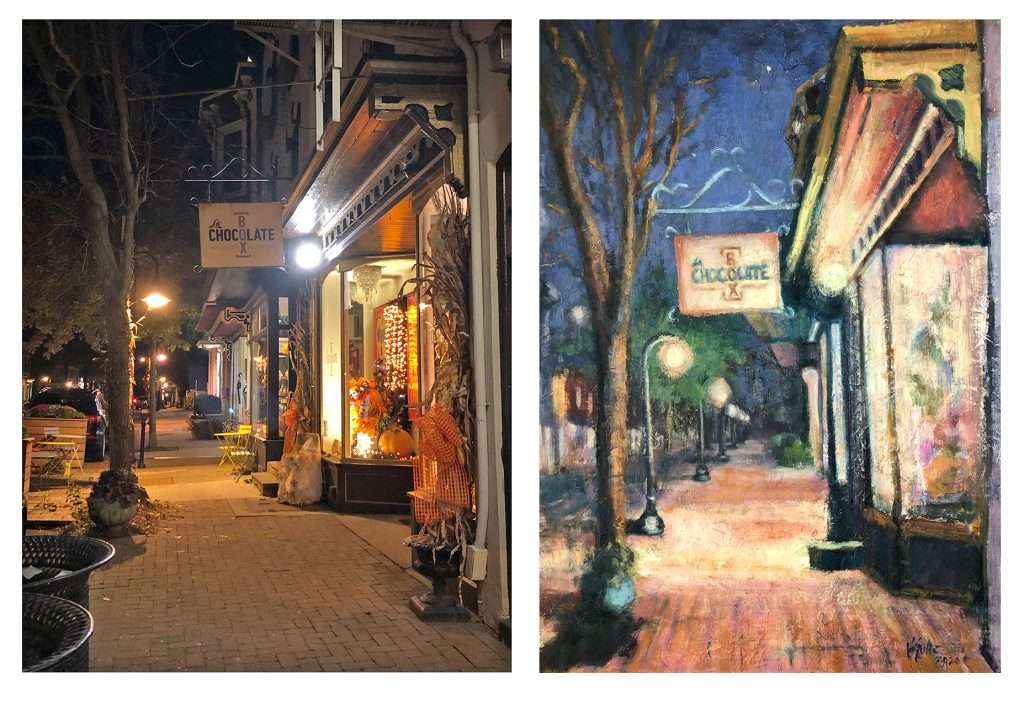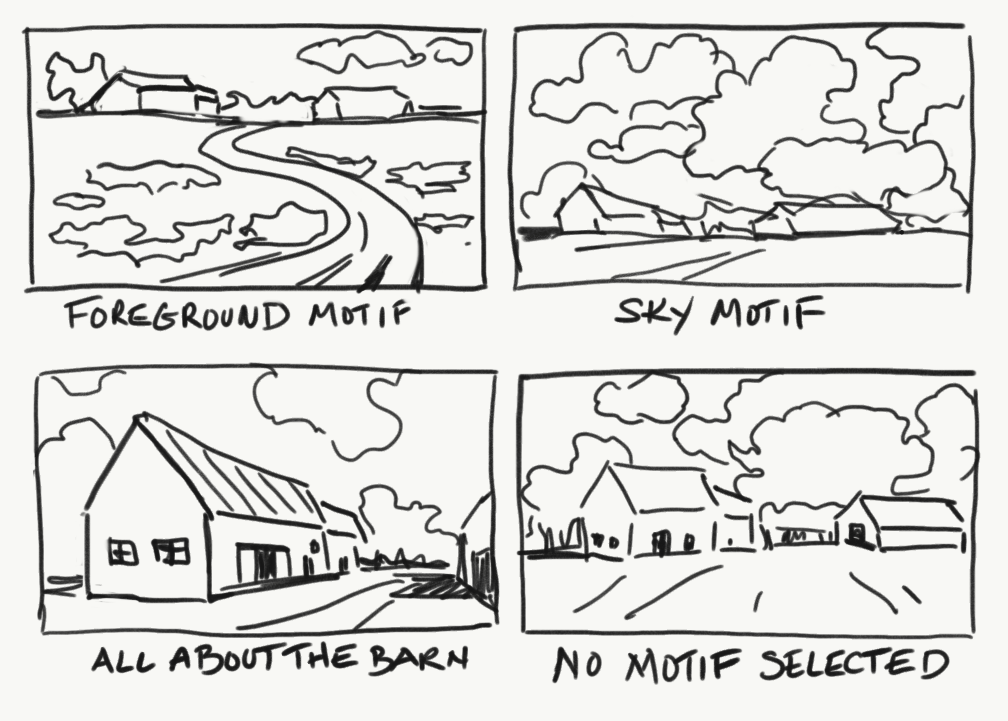Composing paintings outdoors
We’ve done a lot of work on composition already. We’ve had the fun adventure of finding our own objects and using our own imagination to set up a still life under controlled lighting. We’ve learned some valuable stuff about composing a powerful painting:
- We know that we can work out much of the composition by creating various Notan thumbnails of our idea.
- We know that a variety of line and shape are paramount in creating an interesting composition.
- We know that an unequal balance of light and dark masses is important in establishing the key of the painting.
- We know that large masses in our composition should vary in size and shape.
- We know that the value of those large masses should vary.
- We know that the focus of your painting should not sit right in the center, and that repetitive anything is a snoozer.
- We also know that if we run an object off the canvas, it’s because we designed it that way and not because we ran out of room.
See – we know a lot!!! All of these things that we’ve learned up to this point will come along with us as we work to compose scenes in nature that speak to our own personal poetry.
We have the added joy and challenge of taking what we see out there, and equally as important – what we feel out there, and applying all of these same lessons to a plethora of subject matter. In the vastness of nature we don’t build the scene, we choose it. We decide what sings to us and we compose the scene, remembering that what we leave out is just as important as what we put in. We want to translate the power and peace of Mother Nature through oil paint, and that gives us permission to compose it as we like. Pay attention to the laws of nature, but if you need to remove a tree for the power of the composition, don’t hesitate. If you need to leave out an old car, or a building, or your painter friend who is in your view line, or a fence, go right ahead. If you need to add a spot of color that suggests something to draw in or stop the eye, you do it! You are the wizard of your wonderful world – especially the one on canvas.
In the comparison below you will see that I chose to leave out the cars, the Halloween decorations, the table on the street… The chocolate shop under the streetlight was my priority, not representing every detail.
Choose your Motif
Your motif if your dominant idea or the ‘poetry’ you want to feature in your composition. When we step outside there is so much to choose from, and it’s our job to pick and choose who/what is the superstar in the image. The more we try to pack in there, the more we have to be really conscious of how we are leading the eye and what we want the viewer to focus on. Some of that is done with edges, brushwork, texture, and color, but before all of that magic happens narrow down your motif. What is your dominant idea? Take a look at the sketches below.
- In the first sketch it’s all about something interesting in the foreground. Maybe massed wild flowers or puddles of water in the road, or the road itself, or beautiful native grasses, or sage brush…
- In the next it’s all about the building clouds. They tower over a beautiful setting, but they are clearly the star of the show.
- In the next, it’s all about the barn. This is the one I selected. It still has clouds, but the barn is the focus.
- In the last there is no motif selected. My viewer is not sure what I want them to look at.

